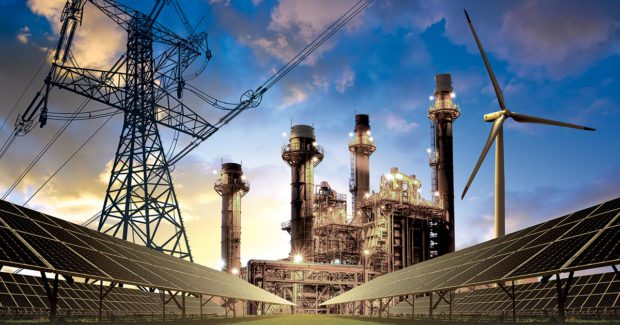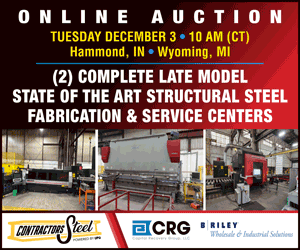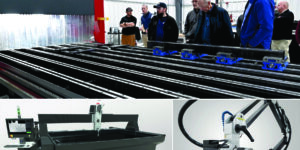Changing the Mix
The changing power plant landscape involves a lot of new plant construction and conversion of older plants that are replacing their coal-fired boilers with natural gas boilers to retain the same power generation capacity – all of which is good news for welding shops that supply parts and assemblies for power plant construction and repair.
Posted: February 14, 2018
The next generation of power plants is changing the mix of the 8,084 power plants in the United States that had operational generators with nameplate electricity generation capacities of at least one megawatt at the end of 2016, the most recent year that federal data is available.1 Power plant operators are scheduled to bring 20 GW of new natural-gas fired generating capacity online in 2018, and most of this new capacity uses combined-cycle technology that can be efficiently run for long periods of operation.1 Almost 6 GW of these capacity additions are being built in Pennsylvania, and more than 2 GW are being built in Texas. Whereas coal supplied about 30 percent of total U.S. electricity generation in 2017, U.S. electricity generation from coal-fired power plants is expected to fall slightly below that in 2018.1 Power plant operators have reported that they plan to retire 13 GW of coal-fired capacity in 2018, primarily in the latter half of the year. These retirements, combined with a forecast of lower natural gas prices, will reduce coal’s share of total U.S. generation to 28 percent in 2019.1
Nuclear generation contributed 20 percent of total generation in 2017 and is expected to supply a similar share this year.1 But the scheduled retirement of reactors next year at the Three Mile Island plant near Harrisburg, PA, and the Pilgrim Nuclear plant in Plymouth, MA, before the end of the year contribute to the forecast that the share of power generated from nuclear will fall to 19 percent in 2019.1 Last year, natural gas and hydropower each supplied between 26 percent and 27 percent of total generation in the Western states region, where the U.S. Energy Information Administration (EIA; Washington, DC) expects increased generation from natural gas to partially offset an expected reduction in hydroelectric generation during 2018. The share provided by hydropower in the West is forecast to fall to 23 percent in 2018 as the share provided by natural gas rises to 29 percent.1
References
- “How many power plants are there in the United States?” U.S. Energy Information Administration, February 1, 2018. Retrieved from www.eia.gov.
Utility-scale generation from renewable energy sources other than hydropower should continue growing in 2018, albeit at a slower pace than last year. Non-hydro renewable energy sources, which supplied an annual average of 9.6 percent of total U.S. electricity generation in 2017, are forecast to supply over 10 percent of annual average total U.S. generation in 2019 for the first time on record.1 This changing mix of the power plant landscape involves a lot of new plant construction, as well as the conversion of older plants that will replace their coal-fired boilers with natural gas boilers to retain the same power generation capacity – all of which is good news for welding shops that supply parts and assemblies for power plant construction and repair. This changing mix represents a big opportunity to grow their business. To help them stay competitive on job bidding, here is some of the latest welding equipment that can improve their productivity and help save them more time and labor:
Stick and TIG Welding of Pipe and Plate in Power Plant Construction
Available with an optional digital weld meter, the CST 280 stick and TIG welding power source from Miller Electric offers more precise control when presetting or monitoring welding amperage.
Purging and Monitoring Systems for Welding Pipework in Power Stations
COB Industries offers the HFT HotPurge system with glass treated silicone cloth that resist temperatures up to 1,400 deg F, and the lightweight, portable HFT PurgEye 300 Plus gas analyzer that measures oxygen levels down to 1 ppm.
Welding Helmet with Lens Technology for Multiple Welding Jobs in Power Generation Work
The VIKING PAPR 3350 Welding Helmet from Lincoln Electric has an optional extended battery pack and 4C lens technology that gives operators a clear and undistorted view of the welding arc and puddle to maximize control and minimize defects.
Wire and Flux Selection Guide for Submerged Arc Welding Applications
The Submerged Arc Welding guide from Hobart Brothers simplifies the selection of wires and flux for submerged arc welding, with features and benefits of each wire and recommendations for pairing the appropriate flux, along with suggested operating parameters for gaining optimal results.
Multi-Axis Welding Positioners
Complete 3-axis, 4-axis, or 5-axis welding positioners from LazerArc provide superior accuracy, index time and flexibility by utilizing one of two mechanical drive systems, depending on user requirements.















